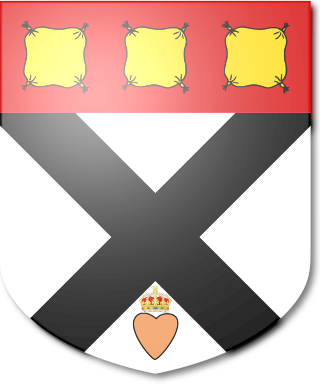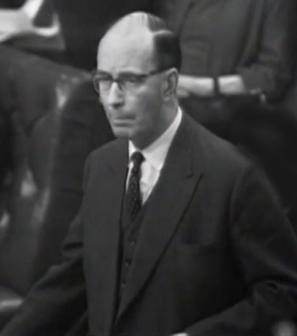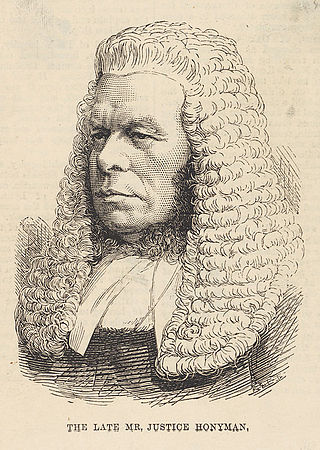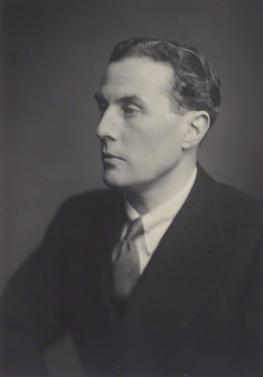Related Research Articles

Marquess of Linlithgow, in the County of Linlithgow or West Lothian, is a title in the Peerage of the United Kingdom. It was created on 23 October 1902 for John Hope, 7th Earl of Hopetoun. The current holder of the title is Adrian Hope.

Earl of Scarbrough is a title in the Peerage of England. It was created in 1690 for Richard Lumley, 2nd Viscount Lumley. He is best remembered as one of the Immortal Seven who invited William of Orange to invade England and depose his father-in-law James II. Lumley had already been created Baron Lumley, of Lumley Castle in the County of Durham, in 1681, and Viscount Lumley, of Lumley Castle in the County of Durham, in 1689. These titles are also in the Peerage of England. The title of Viscount Lumley, of Waterford, was created in the Peerage of Ireland in 1628 for his grandfather Sir Richard Lumley, who later fought as a Royalist in the Civil War.

Baron Hotham, of South Dalton in the County of York, is a title in the Peerage of Ireland. It was created in 1797 for the naval commander Admiral William Hotham, with remainder to the heirs male of his father. Hotham was the third son of Sir Beaumont Hotham, 7th Baronet, of Scorborough, and in 1811 he also succeeded his nephew as eleventh Baronet. Lord Hotham never married and on his death in 1813 he was succeeded in both titles by his younger brother Beaumont, the second Baron and twelfth Baronet. He had previously represented Wigan in the House of Commons.

Baron Feversham is a title that has been created twice, once in the Peerage of Great Britain and once in the Peerage of the United Kingdom. The first creation, in the Peerage of Great Britain, came in 1747 when Anthony Duncombe, who had earlier represented Salisbury and Downton in the House of Commons, was made Lord Feversham, Baron of Downton, in the County of Wilts. He had previously inherited half of the enormous fortune of his uncle Sir Charles Duncombe. However, Lord Feversham had no sons and the barony became extinct on his death in 1763. The peerage was revived in the Peerage of the United Kingdom in 1826 in favour of his kinsman Charles Duncombe, who was created Baron Feversham, of Duncombe Park in the County of York. He was a former Member of Parliament for Shaftesbury, Aldborough, Heytesbury and Newport. Duncombe was the grandson of Thomas Duncombe, son of John Brown by his wife Ursula Duncombe, aunt of the first Baron of the 1747 creation. Ursula had inherited the other half of her brother Sir Charles Duncombe's fortune. Lord Feversham son, the second Baron, sat as a Conservative Member of Parliament for Yorkshire and the North Riding of Yorkshire.
Baron Hothfield, of Hothfield in the County of Kent, is a title in the Peerage of the United Kingdom. It was created in 1881 for Sir Henry Tufton, 2nd Baronet, who was appointed Lord Lieutenant of Westmorland the same year and who also served briefly as a government whip in the Liberal administration of 1886. His eldest son, the second Baron, notably served as Mayor of Appleby, Westmorland. On the death of his son, the third Baron, in 1961, this line of the family failed. The late Baron was succeeded by his first cousin, the fourth Baron. He was the only son of the Hon. Sackville Philip Tufton, second son of the first Baron. On his death in 1986 this line of the family also failed and the titles passed to his first cousin, the fifth Baron. He was the eldest son of the Hon. Charles Henry Tufton, third son of the first Baron. As of 2017 the titles are held by his son, the sixth Baron, who succeeded in 1991.

Baron Grimthorpe, of Grimthorpe in the East Riding of the County of York, is a title in the Peerage of the United Kingdom. It was created on 17 February 1886 for the lawyer and architect Edmund Beckett, 5th Baronet, with remainder to the heirs male of his father. He was succeeded according to the special remainder by his nephew, the second Baron. He had earlier represented Grimsby in Parliament. As of 2014 the titles are held by the latter's great-grandson, the fifth Baron, who succeeded his father in 2003.

Baron Savile, of Rufford in the County of Nottingham, is a title in the Peerage of the United Kingdom. It was created in 1888 for the diplomat Sir John Savile. He was the eldest of the five illegitimate children of John Lumley-Savile, 8th Earl of Scarbrough, and the grandson of John Lumley-Savile, 7th Earl of Scarbrough. The latter was the fourth of the seven sons of Richard Lumley-Saunderson, 4th Earl of Scarbrough, and his wife Barbara, sister and heiress of the politician Sir George Savile, 8th and last Baronet, of Thornhill, who bequeathed the substantial Savile estates in Yorkshire and Nottinghamshire to his nephew the Hon. Richard Lumley-Saunderson, later 6th Earl of Scarbrough. On his death the estates passed to his younger brother, the aforementioned seventh Earl, and then to his son the eighth Earl. The latter bequeathed the estates to his second natural son Captain Henry Lumley-Savile. When he died they passed to his younger brother Augustus William Lumley-Savile (1829–1887) and then to his eldest brother, the aforementioned John Savile, who was created Baron Savile the following year.
Baron Wenlock is a title that has been created three times, once in the Peerage of England and twice in the Peerage of the United Kingdom. The first creation came in 1461 when the soldier Sir John Wenlock was summoned to Parliament as Lord Wenlock. However, he was childless and on his death in 1471 the title became extinct.
There have been two baronetcies created for people with the surname Heathcote, both in the Baronetage of Great Britain and both created in 1733. The holders of the first creation were later elevated to the peerage as Baron Aveland and Earl of Ancaster, which titles are now extinct. However, both baronetcies are extant as of 2008.

The Johnstone, later Pulteney, later Johnstone Baronetcy, of Westerhall in the County of Dumfries, is a title in the Baronetage of Nova Scotia. It was created on 25 April 1700 for John Johnstone, one of the Scottish representatives to the 1st Parliament of Great Britain, with remainder to his heirs male. He was eighth in descent from Matthew Johnstone, who is said to have been a younger son of Sir Adam Johnstone, ancestor of the Earls and Marquesses of Annandale. The second Baronet sat as a Member of Parliament for Dumfries and Dumfriesshire. The third Baronet represented Dumfries, while the fourth Baronet sat as Member of Parliament for Dumfries and Weymouth. The fifth Baronet, Sir William, was Member of Parliament for Cromarty and Shrewsbury. He married Frances, daughter of Daniel Pulteney and niece and heiress of William Pulteney, 1st Earl of Bath, through which marriage vast estates came into the family. On his marriage Sir William assumed the surname of Pulteney in lieu of Johnstone. His only child, Laura, inherited the Pulteney estates and was created Countess of Bath in 1803. The sixth, seventh and eighth Baronets all represented Weymouth in Parliament. The sixth Baronet twice declined a peerage offered to him by Spencer Perceval.

Patrick Robin Gilbert Vanden-Bempde-Johnstone, 4th Baron Derwent, was a British peer and Conservative politician.
Harcourt Vanden-Bempde-Johnstone, 1st Baron Derwent, known as Sir Harcourt Vanden-Bempde-Johnstone, 3rd Baronet, from 1869 to 1881, was a British peer and Liberal Party politician. He served for ten years as a Member of Parliament (MP), before becoming a peer with a seat in the House of Lords.
Sir John Vanden-Bempde-Johnstone, 2nd Baronet was a British Member of Parliament.
Sir Richard Vanden-Bempde-Johnstone, 1st Baronet was a British Member of Parliament.
There have been four baronetcies created for persons with the surname Musgrave, one in the Baronetage of England, one in the Baronetage of Nova Scotia, one in the Baronetage of Ireland and one in the Baronetage of the United Kingdom. As of 2014 two of the creations are extant.
Leopold George Frederick Agar-Ellis, 5th Viscount Clifden, known as Leopold Agar-Ellis until 1895, was a British Liberal politician.

The Honyman Baronetcy, of Armadale in the County of Orkney, was a title in the Baronetage of the United Kingdom. It was created on 19 May 1804 for William Honyman, a Lord of Session under the judicial title Lord Armadale. The second Baronet sat as Member of Parliament for Orkney. The fourth Baronet was a Judge of the Court of Common Pleas. The title became extinct on the death of the fifth Baronet in 1911.

George Vanden Bempde, 3rd Marquess of Annandale, succeeded James Johnstone, 2nd Marquess of Annandale on his death in 1730, and enjoyed that title from then to his own death, whereupon the title became extinct.

George Harcourt Vanden-Bampde-Johnstone, 3rd Baron Derwent FRSA, was a British author, diplomat and Liberal politician.
Lieutenant Colonel William Henry Wellesley, 2nd Earl Cowley was an English aristocrat and soldier.
References
- ↑ "No. 25021". The London Gazette . 30 September 1881. p. 4891.
- ↑ "No. 13789". The London Gazette . 23 June 1795. p. 646.
- ↑ "Gender equality for peeresses". Daily Telegraph.
Sources
- Hesilrige, Arthur G. M. (1921). Debrett's Peerage and Titles of courtesy. London: Dean & Son. p. 285.
- Kidd, Charles, ed. (1903). Debrett's peerage, baronetage, knightage, and companionage. London: Dean and son. p. 306.
